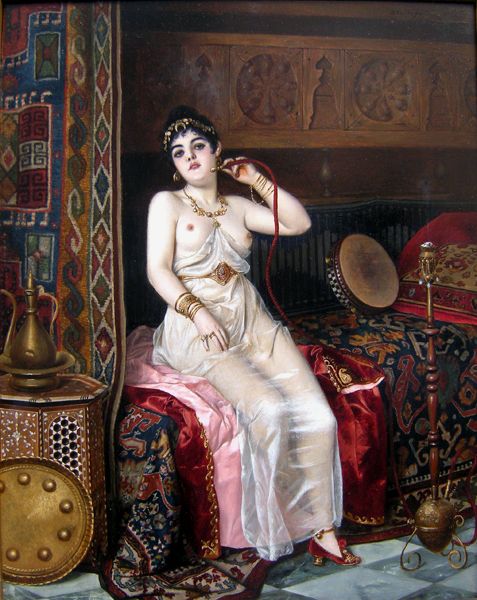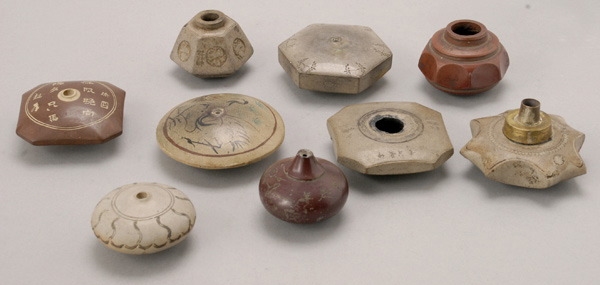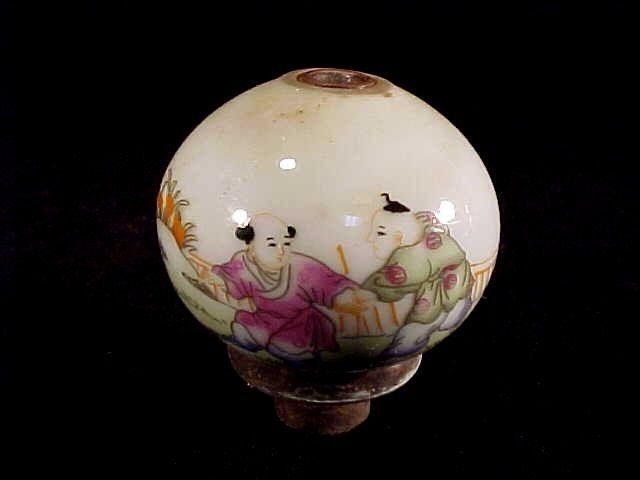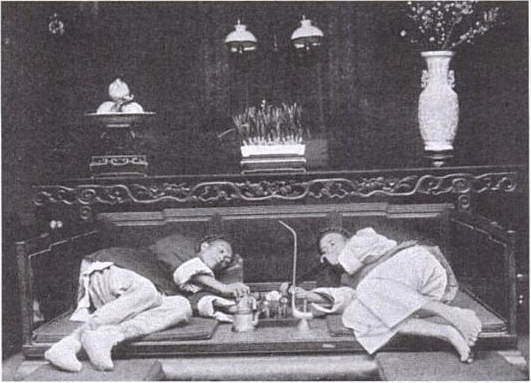(Moritz Stifter (1857-1905) ‘The Opium Pipe’)
What is Opium?
Opium is a drug that comes from the opium poppy. This drug can be consumed through means of vaporization or with food consumption.
When opium is smoked, the drug can cause a high that can last from 3-4 hours and cause relaxation, pain relief, reduced stress and sleepiness. Overtime this drug can also lead to weight loss, mental deterioration, reduced energy, reduced sex drive, comas and even death. Many addicts report the feeling of losing their minds through the abuse of opium.
Brief History of the China and Opium: The Wars, Laws and Trade
The opium pipe is used to consume the drug opium (from poppy seeds) and is designed for the vaporization of the drug so that it may be inhaled and not burned. The opium pipe is unique from all other pipes such as those used to smoke tobacco, kef, hashish and many other root mixtures. Most studies revolve around Chinese use and popularity of the opium pipe, however the drug itself does not originate from China but from Arab traders throughout the Orient and eventually the West as well. It is believed that the drug itself was brought to China from Egypt around the 17th century.
The Opium trade was originally dominated by the Dutch, but was soon taken over by the British during the 1800s due to it’s government-controlled opium monopoly over India’s trade network and the eventual foundation of the East India Company. Eventually the British began to trade opium for silver in China. Overtime, due to the threat of British overpowering the trade system in China, several laws were made to try and stop them from importing opium to China, but the trade still continued. Although China is widely known for it’s tea trade, the opium trade “was said to be the most valuable trade in any single commodity, anywhere on earth”(1), instigating two Opium Wars: 1840 to 1842 and 1858 to 1860.
Opium smoking began in China in the early eighteenth century where it’s consumption grew to immense popularity over the next two hundred years, eventually spreading to popular American and European cities as well. Despite the fact that a law was passed in 1909 prohibiting the importation and illegal use of opium in the United States, opium still thrived among many addicts. Smoking opium became popular in many European countries as well.
(Le Petit Journal June 5th, 1903 – ‘French opium den’)
Today, opium use is banned in many countries. Afghanistan is currently the primary producer of the drug while Chinese production of opium mainly trades and profits from North America. Legal trade is common in countries such as India and Turkey. In the United Kingdom and the United States some opium derivatives are legal when used in prescription drugs.
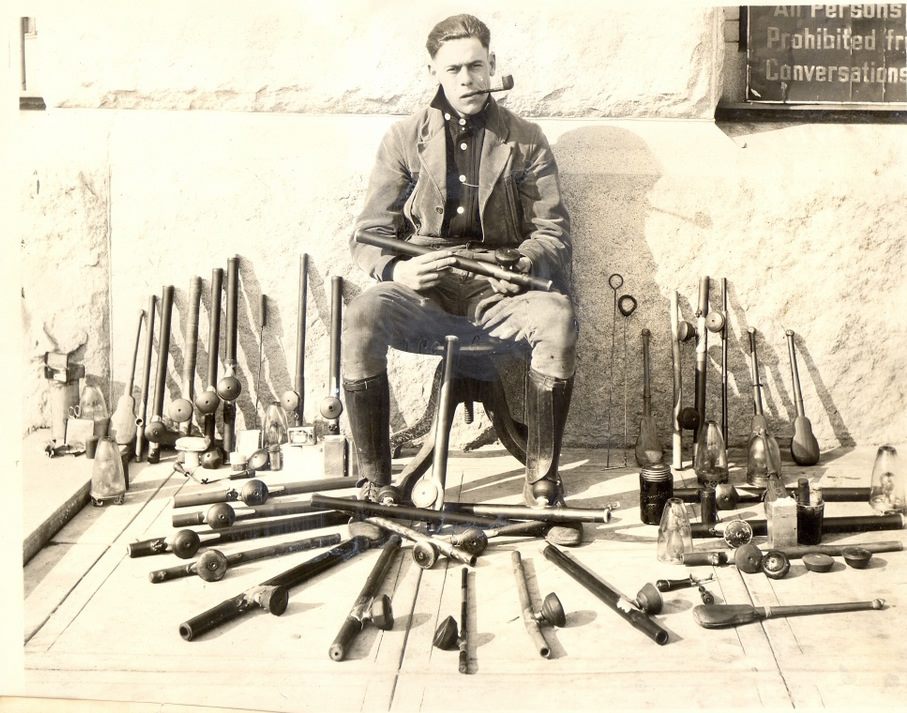 (A police officer poses with confiscated opium pipes and opium lamps from den raids in San Francisco c.1900)
(A police officer poses with confiscated opium pipes and opium lamps from den raids in San Francisco c.1900)
The Opium Pipe
The literary works read in Ombretta Frau’s Gendering Material Cultures course, did not include any use or presence of the Opium Pipe. The most Orientalism obsessed characters such as Andrea Sperelli or Maria Bertolese smoked tobacco and used incense in their living quarters, but not one of them owned an opium pipe. Due to the Orientalist appeal during their time period, I would have assumed that an opium pipe would have been the perfect piece to the Orientalist puzzle they created in their lifestyle and choice of material objects.
Opium pipes were used more by men than women all over the world, therefore, males in all ethnic groups were at a greater risk to opium addiction than women. However, it is possible to find art and photographs both from Europe and the Orient of women and men smoking opium. The pipe however was designed for a men. Due to it’s larger size, heavier weight and the strong power of the drug, men did not believe it was suited for a woman’s use.
The absence of the opium pipe in the literary works Il Piacere by Gabrielle D’Annunzio and Le Tre Marie by may have to do with the fact that the use of Opium pipes were more common in present-day European countries such as Britain and France due to their involvement in the opium trade with China and the Second Opium War of 1858. Italians who were interested in “Orientalism” may have used oriental styled tobacco pipes imported from Japan and China rather than opium pipes. Therefore, it would be no surprise if Andrea Sperelli and Maria Bertolese used pipes from the Orient to smoke their tobacco. 
(Japanese Tobacco Pipes from Skinner Museum. Made from bamboo wood. Beautifully colored with warm orange, red and brown hues. Light to hold. Brass mouth piece and end piece. Japanese scripture engraved in brass mouth piece. Unknown era, possibly 19th century pipe)
Skinner Museum’s Chinese Opium Pipe
This opium pipe is Chinese and appears to follow the style of one used during the 19th century. This pipe is of a more basic style and due to the slight amount of decoration and the fine bamboo used to make it, we can guess that I may have belonged to someone of the middle class. Chinese noblemen owned pipes covered with semi-precious jewels, jade tips and had tubes decorated with mother of pearl, tortoiseshell, ivory or jade. This pipe is made from fine bamboo or deep color from years of use. The bamboo has brown, orange and red hues and was smoothly carved to be smooth to the touch and easy to hold. The stem is cut into ridges giving the pipe a segmented appearance. A small carved and pointed nub rises from the stem to facilitate the smokers grip on the pipe while in use. The saddle of the pipe is a made of silver, further emphasizing that it was used by someone above the lower class.
A basic opium pipe consists of a long straight hollowed-out tube, generally made of bamboo with one end sealed and the other has a hole from which one may draw the smoke to their mouth. Approximately three-quarters of the distance away from the draw-hole was a decorative collar, called the saddle of the pipe, with a socket fastened to the tube. As we can see, the pipe above from the Skinner Museum has all of these characteristics. Each component was usually made with different materials. This pipe however does not have a mouth piece on the draw-hole or an opium bowl on the silver plate.
The Damper Bowl is missing from the opium pipe and may have been removed by the owner. The opium bowl was used for the distillation of the opium and to cool the smoke and powdery resin that may accumulate within the pipe over time. Damper bowls were commonly made of porcelain and ceramic for strength and durability. The material of the damper bowl depended on what the smoker could afford to buy and the elegance of the pipe itself. Many opium smokers owned more dampers than pipes.
Here are some example of Chinese damper bowls from the 19th Century:
(A selection of mid to late 19th century Yixing clay damper bowls from the late Qing Dynasty)
(Here is a Chinese ceramic opium pipe damper bowl from the mid 1800 Opium War Era)
Other Interesting Images portraying opium pipe usage and design
(Chinese Opium house, 1902. This image illustrates the way in which opium pipes were used: laying down to one’s side facilitating control of the pipe and use of the candle’s flame.)
(19th century Chinese opium smoking set.The opium pipe is elevated on a stand at the end of the tray. Due to the elaborate details of this Chinese opium set we know that it must have belonged to a wealthy Chinese nobleman. Solid silver, gold inlay, black lacquer, porcelain or ceramic bowl on pipe)

